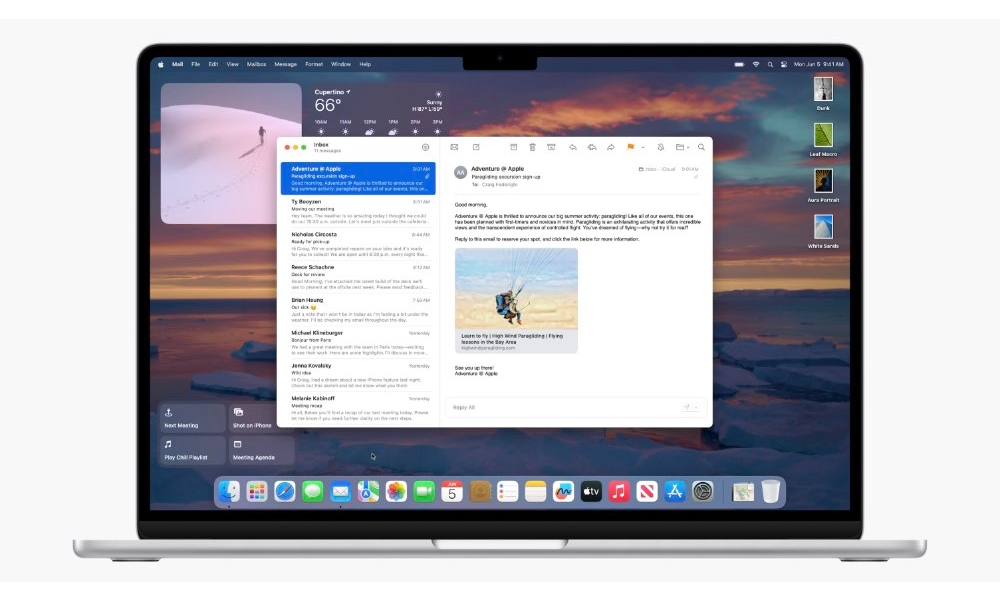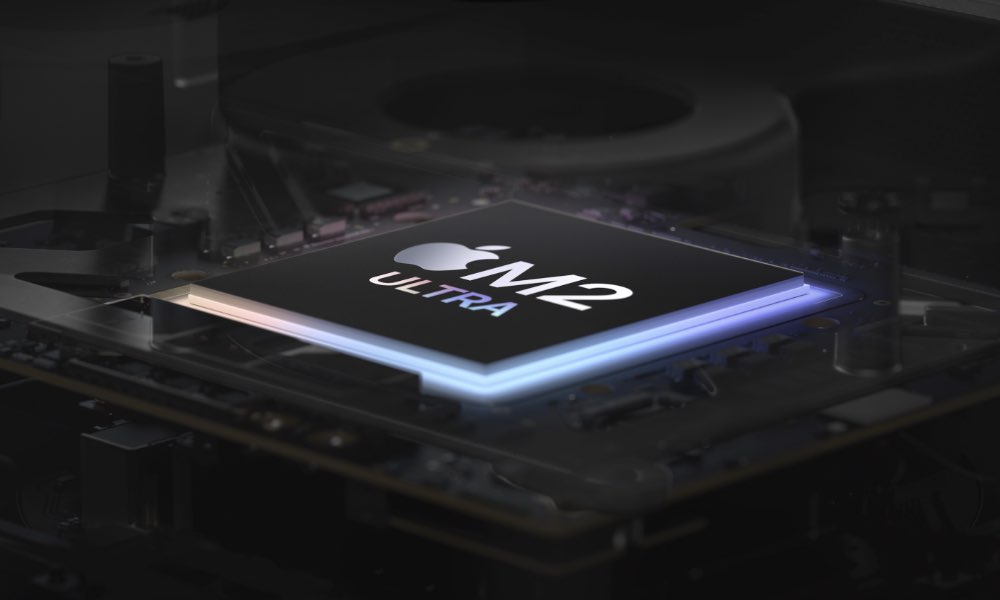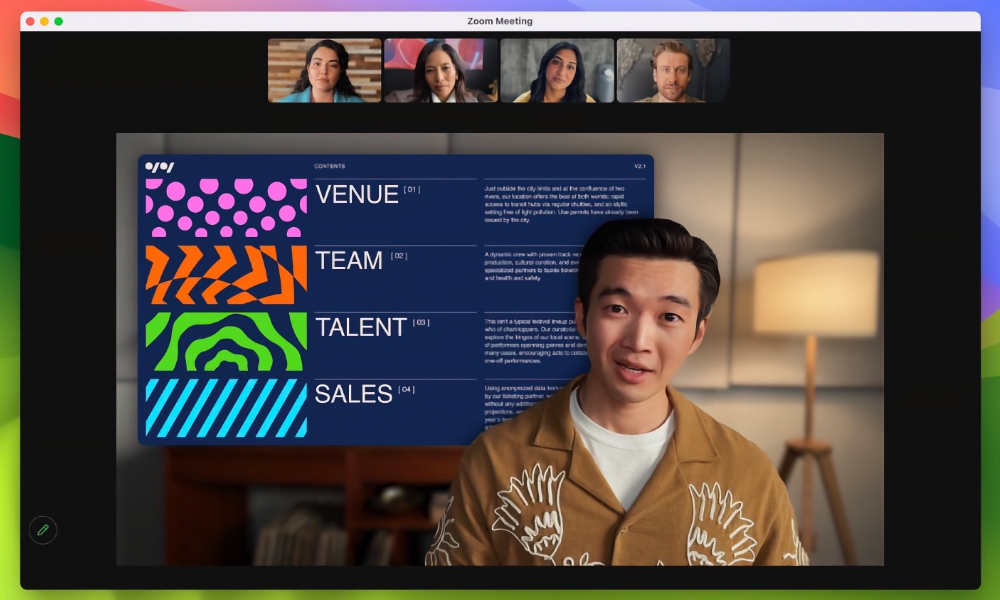Can Intel Macs Still Run macOS Sonoma?

Toggle Dark Mode
It’s been an exciting week for Apple announcements! The new Apple Vision Pro mixed-reality headset stole the show at this week’s Worldwide Developers Conference (WWDC) keynote on Monday, but it was also chock-full of other fun and exciting things, including Apple’s entire lineup of major 2023 OS releases and some new Macs.
The biggest of these was iOS 17, which isn’t surprising since the iPhone is Apple’s bread and butter these days. However, watchOS 10 will also be a pretty groundbreaking update this year with a significant redesign, and iPadOS 17 and macOS 14 brought some cool new features to the table, too.
This year, macOS 14 gets the name “Sonoma” in honor of the California wine valley. This continues the trend Apple began ten years ago when it switched from big feline names to California landmarks with the release of OS X 10.9 “Mavericks,” named after a popular destination for surfers.
However, like last year’s choice of Ventura, Sonoma is a bit of a different destination than the national parks, mountains, deserts, and islands that have dominated most of the macOS landscape, and there may be something to that shift. By the time macOS Sonoma arrives this fall, there will be no Intel Macs remaining in Apple’s lineup.
The transition to Apple Silicon is now effectively complete, with Apple’s beastly Mac Pro getting its most powerful M2 Ultra chip and the old Intel Xeon model riding off into the sunset.

This has left some folks wondering if macOS Sonoma will also spend the end of the road for Intel Mac software updates. Thankfully, even though Apple silicon Macs will get the best features of macOS Sonoma, older models won’t be left out in the cold entirely.
Intel Macs may be gone, but they’re not forgotten. Apple’s products are known for their longevity. Many folks hold onto their iMacs and MacBooks for years, and it’s even less likely that a business that’s invested in one or more Intel Macs Pro is going to rush out and drop another $7,000 on a first-generation Apple silicon model if what they have is still getting the job done.
Which Macs Will support macOS Sonoma?
With the first Apple silicon Macs landing only three years ago, it’s a given that macOS Sonoma will run on any Mac with an M1 chip or newer. It will likely be years before macOS drops support for any M-series Macs.
However, the list of Intel Macs is getting shorter. Like iOS 17 for the iPhone, Apple is drawing the line at the 2018 mark, with only one slight exception.
The 2017 iMac Pro — the only “Pro” iMac ever made — will get macOS Sonoma. Since that model arrived in December 2017, it’s just outside the 2018 line, but it’s also a ridiculously powerful machine designed to tide many folks over between the 2013 and 2019 Mac Pro releases.
Besides that outlier, macOS Sonoma will be available for any MacBook Air, MacBook Pro, Mac mini, iMac, or Mac Pro released in 2018 or later.
Since Ventura drew the line at 2017, this leaves behind only a few models, although it notably excludes the last of the legacy 12-inch MacBooks, which were refreshed in 2017. Likewise, macOS Ventura is also the end of the road for the 2017 13-inch and 15-inch MacBooks Pro and 2017 iMac.
Intel Macs Will Miss Out on Some Features
As expected, some of the new features in macOS Sonoma will be limited to Macs using Apple silicon chips. It’s a trend that began two years ago with macOS Monterey — the first macOS release to come out in the Apple silicon era — and continued with macOS Ventura.

Naturally, features like Live Captions, Live Text in Photos, Spatial Audio, and FaceTime Portrait mode still won’t be available on Intel Macs, and now macOS Sonoma adds a few new Apple silicon exclusive features to that list:
- A Simpler Siri call phrase. Apple is letting us drop the “Hey” across the board when calling for Siri, except on Intel Macs. Presumably, Apple is using its Neural Engine to power this more sophisticated voice recognition, which the Intel chips don’t have.
- Game Mode, which gives higher priority to games and lowers wireless latency, will require an Apple silicon chip.
- Video Conferencing Enhancements like Presenter Overlay and hand gesture recognition for reactions are also unsurprisingly powered by Apple silicon. Presenter Overlay lets you appear as if you’re giving a presentation by intelligently blending you into a screen-sharing session, while the new reactions provide fun 3D augmented reality effects like hearts, confetti, fireworks, and balloons. However, the latter feature may still be available in a limited fashion on Intel Macs when using Continuity Camera with an iPhone 12 or later since Apple can pass some of the heavy lifting off to the A14 chip.
- High-performance Screen Sharing. Apple silicon users will be able to take advantage of a new higher-performance mode when connecting back to their Mac remotely for a more responsive connection. This uses the advanced media engine in Apple’s M-series chips, so it won’t be available for Intel Macs.
The good news is that even though these are some powerful and exciting features, they’re far from the only things that macOS Sonoma has to offer, nor are they even core to the experience of using a Mac; they’re more like bonuses. Those with a 2018 or later Intel Mac will still be able to enjoy stunning new slow-motion screensavers, widgets on the desktop, some nice Safari enhancements, including more secure private browsing, and much more.







